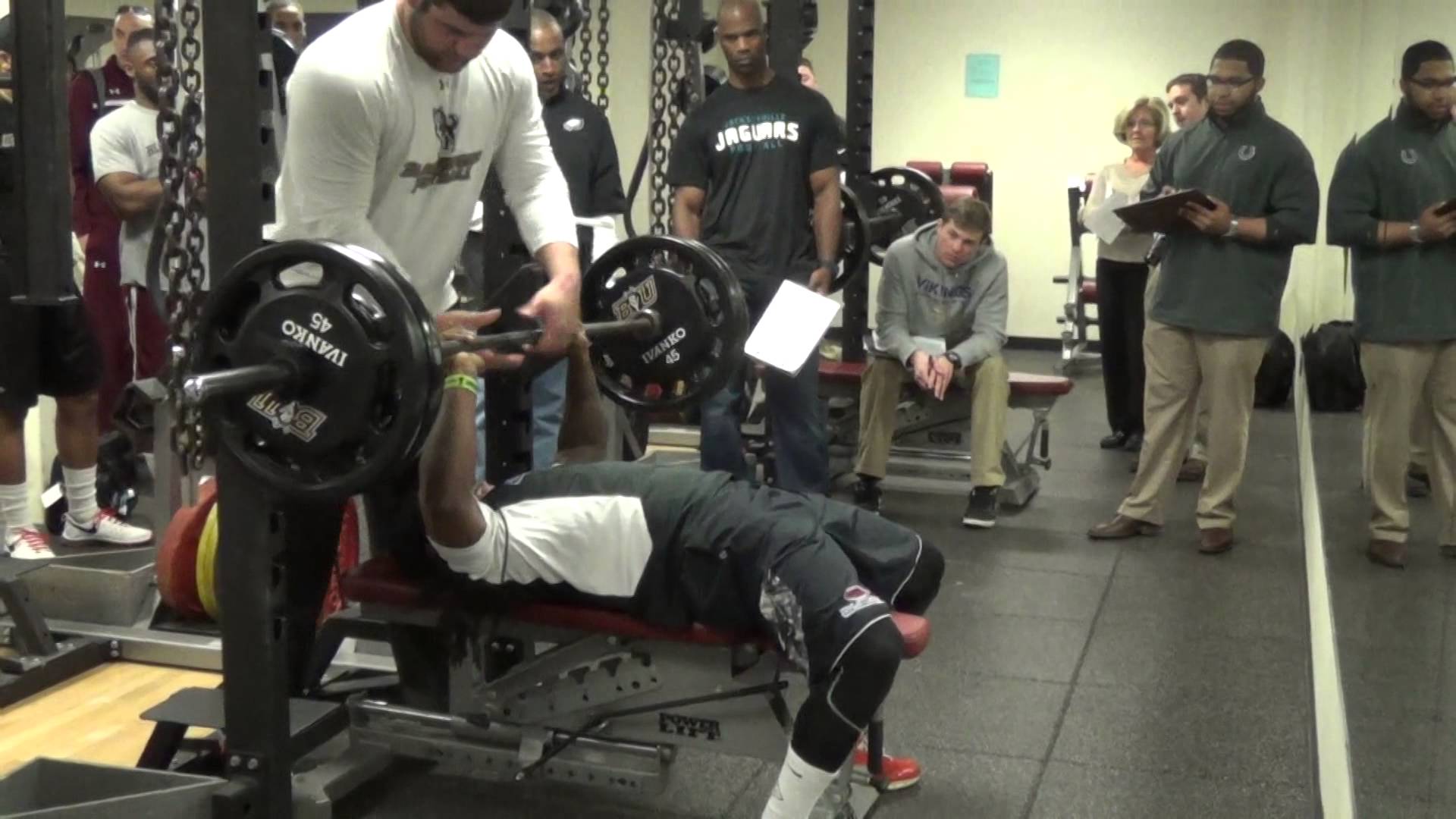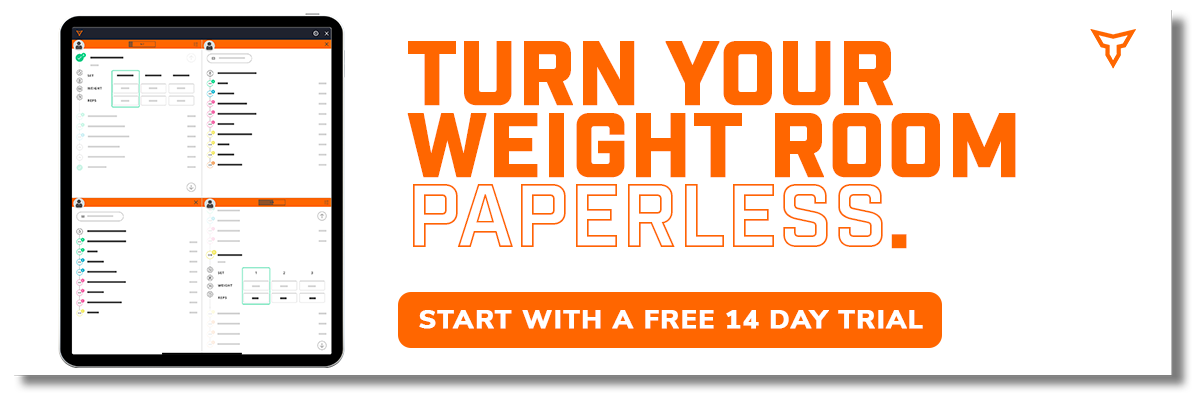From the GA's Desk: Olympic Lifting: It's Deeper than Power
Author Jimmy English is a Graduate Assistant Strength and Conditioning Coach at Springfield College
Different Paths Will Be Traveled
In the world of strength and conditioning and coaching in general, there will never be two identical coaching philosophies. No matter how much your own ideas might agree or differ from other coaches, at the end of the day we are individuals and humans first. We are each encoded with a unique sequence of DNA, all taking a journey through life on different paths. These paths may cross, run parallel to one another, or
even end up in the same place. However, each path is structured and traveled differently with distinctive environments, yet present similar obstacles to the traveler. From a sports performance coach perspective, these obstacles mainly revolve around our athletes, and are main factors in why we do our job. Depending on the environments we travel through, information we learn, and challenges we face; our philosophies on how we overcome these challenges might change. Enhancement of strength, speed, power, reducing injury, handling injury, changing body composition, managing weight room or even practice derived stress—all while having each athlete ready for gameday are some of the many “obstacles” we come across.
So, how does all of that relate to olympic lifting? The “obstacles” listed out above have a seemingly infinite number of solutions. If you have a basic knowledge of the sport the athlete plays, the training adaptations needed for that sport, and how to apply them—there aren't many wrong answers in how we plan to overcome these obstacles. With that being said, when it comes to exercise selection and training methods in our programs, an argument can be made that Olympic lifts are unmatched.
Disclaimer: I will be the first one to say athletes don’t need to do Olympic lifts in order to be successful at their sport when asked. In fact, not much in the weight room will. Training will only help develop traits they can use in order to apply to skills that will make them better at their sport and hopefully become more resilient to injury. In other words, it can help make them a better athlete. At the end of the day, more practice and more knowledge in an athlete’s respective sport will make them better at it. However, this doesn't mean Olympics shouldn't be implemented into nearly every athlete's training program. It is a full body, coordinated relationship with a separate implement of mass being moved through space from one point to another, in a short amount of time—a task that cannot be replicated in many, if any, other ways.
Building Athletic Traits
The physiological benefits of olympic lifting are well established in scientific literature. You don’t have to be a scientist, sports performance coach, or athlete to understand that when you see someone complete an olympic lift, they are a strong and powerful person. A full clean and jerk gives the athlete two separate goals: First, pull the bar from the floor to a front rack position while entering a full front squat, and second, push the bar overhead repositioning your feet into a split stance position followed by bringing your feet together with the bar overhead. This movement requires power, speed, strength, mobility, and coordination. What athletic traits do most team sports require in order to excel at? Power, speed, strength, mobility, and coordination.
The first pull of a clean or snatch from the floor is slow, and requires the athlete to keep good positioning with a heavy load. This part of the lift requires skill and strength, and can mainly help improve the posterior chain. The second and third pull is where the athlete needs to be explosive. They need extension in the hips, ankles, and knees in order to make the bar weightless against gravity. Here the bar must be moving
fast so the athlete can then drop under the bar, either catching it in a front rack position (clean) or overhead squat (snatch). In each of the full movements, the athlete is forced to have a high rate of force production (RFD), while staying stable and strong in deep ranges of motion. Due to the necessity of the athletes to extend at the joints of the lower limb, it can have direct carryover to help improve vertical jump heights and sprint times.
It can also be said that programming Olympic lifts for athletes who do not require high RFDs or the need to be fast or jump high can be beneficial. For example, cross country runners do one thing: run for a long time. They solely run in both events and practices, so it’s up to the strength coach to intelligently prescribe exercises that fill the buckets of what their sport does not provide in order to keep their joints and bones formidable and reduce injury. With sports like cross country, completing olympic lifts can also be a huge confidence boost as well, but we’ll get to that in a bit.
The Overlooked Component
The Olympic lifts are technical movements that entail moving high loads at high speeds while taking some years of practice to master. Some look at that and see a giant red flag, but I see it as a green one. This technicality of the movements means the athlete must 1) Focus and use their brain to learn a new motor skill, and 2) Control and reposition their body along with the barbell into a stable position. This side of the olympic lifts I feel are often overlooked. The repositioning of the body and bar is an athletic formula the athlete needs to figure out. Depending on the load of the barbell in relation to a one rep max, the athlete will have to adjust the speed, timing, and rhythm of the whole movement. The timing and rhythm aspect of these lifts may be the most unique and maybe even most beneficial aspect compared to all else. In sports like football and rugby for example, it is expected of the players to undergo and absorb high forces at high speeds with timing and rhythm in mind—in which the Olympic lifts can also help these athletes prepare for.
Teaching The Movements
Cleans, jerks, and snatches happen in a matter of seconds. Blink and you might miss it. With that being said, each is a complex skill that requires technique to achieve. Some coaches argue that teaching these techniques is taking time away from training sessions where the athletes can truly see adaptations. Having this outlook can be a derivative of a few reasons. The first is the coach truly only sees an athlete or group of athletes one time per week or so. If this is the case, it can make sense not to implement a skill that can have a larger learning curve opposed to something like a box jump or squat pattern—however an argument can still be made for teaching them even to a sporadic athlete. The second reason is the coach does not have olympic lifting within their coaching philosophy (something this article seeks to change), and the third reason is the coach knows how to coach olympic lifts, might know they can be multidimensionally beneficial, but in a lazy manner chooses to neglect them within their programming. So let's be honest—if the argument that teaching olympic lifts is a waste of “precious weight room time”, is an athlete really getting that much better at their sport if they get a few extra sessions of squatting or benching in the weight room? Probably not. Also, let's say each training session is an hour, you take around seven minutes for a warm up, then around 10-15 minutes to teach olympic lifting progressions for a few weeks. That still leaves 43 minutes to do whatever else you want in the session: strength, power, speed, agility, whatever. If you take the time to teach these movements and progressions, that is now another great tool in the tool box.
Summary
In the first paragraph, I put the word “obstacles” in quotation marks, because they essentially turn out to be our primary goals as strength coaches. I think that has a direct relationship with how life goes. A big part of life is being able to have faith through the suffering, to overcome the obstacles in your path, and set out to accomplish what we are passionate about. Olympic lifting correlates with this. It’s not just about developing power or strength or athletic prowess. It’s about putting an athlete in a scenario where they have to mentally engage, use their full body and coordination, and overcome what’s in front of them in a matter of seconds. A good training session is what an athlete needs sometimes, and olympic lifting can make it more enjoyable. It drives intent and focus, while giving a sense of accomplishment when done correctly. Having athletes learn the olympic lifts instills confidence that carries over to not just sport but to everyday life.
References
Jeon, W., Harrison, J. M., Stanforth, P. R., & Griffin, L. (2021). Bone
Mineral Density Differences Across Female Olympic Lifters, Power
Lifters, and Soccer Players. Journal of strength and conditioning
research, 35(3), 638–643.
https://doi.org/10.1519/JSC.0000000000003944
Morris, S. J., Oliver, J. L., Pedley, J. S., Haff, G. G., & Lloyd, R. S. (2022).
Comparison of Weightlifting, Traditional Resistance Training and
Plyometrics on Strength, Power and Speed: A Systematic Review
with Meta-Analysis. Sports medicine (Auckland, N.Z.), 52(7),
1533–1554. https://doi.org/10.1007/s40279-021-01627-2
Santos, P. D. G., Vaz, J. R., Correia, P. F., Valamatos, M. J., Veloso, A. P., &
Pezarat-Correia, P. (2021). Intermuscular Coordination in the Power Clean Exercise: Comparison between Olympic Weightlifters and Untrained Individuals-A Preliminary Study. Sensors
(Basel, Switzerland), 21(5), 1904. https://doi.org/10.3390/s21051904
Subscribe to our blog
Subscribe to receive the latest blog posts to your inbox every week.
Related posts

10 Coaches to Follow on Social Media for Inspiration

How The NFL Combine Should Change (as told by a strength coach)

